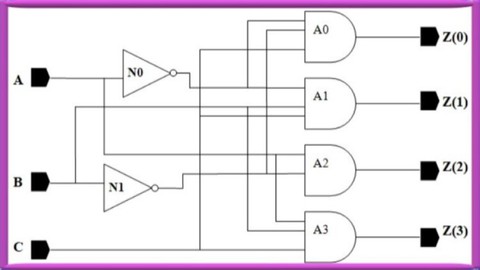Research Methodology: Complete Research Project Blueprint
Loại khoá học: Other Teaching & Academics
Research Methodology From A-Z. A Step-by-Step Guide Through Research Design, Data Collection, Analysis, & Interpretation
Mô tả
There is a lot to think about as a researcher.
What design? How to Measure? How to Analyze?
This course will guide you through your entire research project: from formulating an intriguing research question all the way to drawing compelling conclusions.
What will you be able to DO after this course?
FORMULATE an intriguing but feasible research question.
DESIGN a criticism-proof study that minimizes alternative interpretations of your results.
MEASURE using the most suitable techniques to maximize reliability and validity.
COLLECT DATA while minimizing bias and using the right sample size.
ANALYZE your data correctly using free and easy-to-use software even if you have zero knowledge of statistics.
DRAW compelling conclusions that you can feel confident about and that you can defend against criticism.
What TOOLS will you receive?
FULL RESEARCH CHECKLIST to ensure that your research is complete and criticism-proof.
CONFOUNDER CHECKLIST to address all holes in your research design.
DATA ANALYSIS DECISION CHART to easily select the correct data analysis technique.
Links to free and easy-to-use SOFTWARE for data analysis and sample size calculation.
QUIZZES to solidify and deepen your understanding of each section.
In short, you will get everything you need to complete your research and make it successful.
Many people feel lost when they think about research methodology for the first time.
I was no exception: I felt like I was blindly stumbling through a forest during my first project.
However, I have learned that research does not need to be complicated.
In fact, research can be very simple if you know what steps to follow and how to avoid unnecessary complexity.
Even high-impact research often uses simple methods that can be mastered by anyone.
So, in this course, I want to give you a complete blueprint that guides you through your entire research project.
You will learn what to do, how to do it, and how to keep your research simple yet effective.
So what will you learn exactly?
The Three Elements of an Intriguing Research Question.
How to Formulate an Intriguing Research Question.
A Simple Template For Your Research Question.
How to Define The Variables in Your Research Question.
The Four Elements of Strong Methodology.
Which Methodology to Use? Qualitative vs Quantitative.
How Your Research Design Affects the Interpretation of Your Findings.
Inferring Causation - How to Avoid This Common Mistake!
The Most Effective Way to Rule out Alternative Explanations.
Types of Research Designs.
How to Avoid Unnecessary Complexity in Your Research Design.
Why You Need to Randomize (And How).
Experimental And Non-experimental Designs.
Confounders in Research Designs.
How to Design Successful Non-Experimental Studies.
How to Make Your Variables Measurable.
The Two Elements of an Effective Measurement.
A Simple Trick To Boost The Reliability of Your Measurements.
Types of Measurements - Which One is Right for You?
What to Do If Your Variables Cannot Be Measured Accurately (Simple Hack).
The Three Elements of Good Data Collection.
Data Collection Strategies And When To Use Which.
Sample size - How Many Participants Do You Need?
The Three Steps of Data Analysis.
Master Free And Easy-to-use Software for Data Analysis (JASP).
Data Preparation STEP 1: Import and Format Your Data.
Data Preparation STEP 2: Deal With Missing Values.
Data Preparation STEP 3: Handle Outliers (Tricky).
How to Analyze Data with a Numerical IV and Numerical DV (Step-by-step).
How to Analyze Data with a Categorical IV and Numerical DV (Step-by-step).
How to Analyze Data with a Numerical IV and Categorical DV (Step-by-step).
How to Analyze Data with a Categorical IV and Categorical DV (Step-by-step).
How to Generalize to a Population.
The Three Principles Behind Every Statistical Test.
The One Number You Need to Generalize Your Findings.
How to Use Inferential Statistics (Step-by-step).
Generalizing a Correlation.
Generalizing a Difference Between Groups (ANOVA).
Generalizing a Difference Between Moments in Time (RM ANOVA).
Generalizing in a Mixed Design (RM ANOVA).
Generalizing a Continuous Effect on Probabilities (Logistic Regression).
Generalizing a Difference Between Probabilities (Chi Square Test).
Avoid Mistakes! Two Common Mistakes and How to Prevent Them.
The Two Types of Statistical Errors - And How to Minimize Them.
How to Select The Right Sample Size (Power Analysis).
Master Free and Easy-to-use Software For Sample Size Calculation (G*Power).
Sample Size Calculation For Correlations.
Sample Size Calculation For ANOVAs.
Sample Size Calculation For Logistic Regression.
Sample Size Calculation For Chi Square Tests.
Three Simple Strategies to Maximize Your Statistical Power.
How to Test the Reliability of Your Measurements.
How to Test the Validity of Your Measurements.
Conducting Your Research: Essential Parts That You Do Not Want to Miss in Any Research Study.
Recruiting: How To Find Participants.
Incentives: How To Motivate People to Participate.
The Four Steps of Interpreting Findings.
How to Interpret Results in an Experimental Design.
How to Interpret Results in a Quasi-Experiment.
How to Interpret Results in a Non-Experimental Design (Categorical IV).
How to Interpret Results in a Non-Experimental Design (Numerical IV).
How to Interpret Results in a Non-Experimental Design (Categorical IV and DV).
How to Interpret a Null-result.
How to Fix Methodological Problems Even After Your Study is Already Conducted.
And more!
In short, you will learn specifically why, what, when, where, and how to perform research.
Let me add that I want you to be truly happy with this course.
I used to be in your shoes and I want to give you the best possible course to help you succeed.
If this course does not deliver on every promise (and then some) you can get a full refund.
So go ahead and give this course a test drive.
You can take the whole course, enjoy all of its benefits, and still get your money back if you are not satisfied.
After you click on the red button, the lectures will guide you through the research process.
You will also receive tools such as checklists, decision charts, and free software to make your work easier.
In addition, you can ask me questions anytime and can have my full support on every step of the way.
Bạn sẽ học được gì
FORMULATE an intriguing but feasible research question.
DESIGN a criticism-proof study that minimizes alternative interpretations of your results.
MEASURE using the most suitable techniques to maximize reliability and validity.
COLLECT DATA while minimizing bias and using the right sample size.
ANALYZE your data correctly using free and easy-to-use software even if you have zero knowledge of statistics.
DRAW compelling conclusions that you can feel confident about.
Yêu cầu
- There are no requirements. Come as you are!
Nội dung khoá học
Viết Bình Luận
Khoá học liên quan

Đăng ký get khoá học Udemy - Unica - Gitiho giá chỉ 50k!
Get khoá học giá rẻ ngay trước khi bị fix.


















Đánh giá của học viên
Bình luận khách hàng